If you’re rethinking your lawn or starting a native garden, native grasses are often overlooked—but they play a crucial role in rebuilding ecosystems and restoring soil health. They also add texture, movement, and structure to any landscape. These humble plants aren’t just filler between wildflowers—they’re the underground backbone of prairies and meadows, working hard to improve soil stability, fertility, and biodiversity.
For a specific example, check out my recent blog on Big Bluestem (Andropogon gerardii)—a prairie powerhouse that provides habitat for wildlife, improves soil health, and helps create low-maintenance, drought-tolerant landscapes.
Now let’s take a closer look at why native grasses are essential for any regenerative garden.
What Are Native Grasses?
Native grasses are grass species that have evolved in a specific region over thousands of years. In the Midwest and Great Lakes region, species like Big Bluestem (Andropogon gerardii), Little Bluestem (Schizachyrium scoparium), Indian Grass (Sorghastrum nutans), Switchgrass, (Panicum virgatum) and Prairie Dropseed (Sporobolus heterolepis) are common examples.
Unlike ornamental or turf grasses, native grasses are perennial, meaning they come back year after year, and they develop incredibly deep and complex root systems.
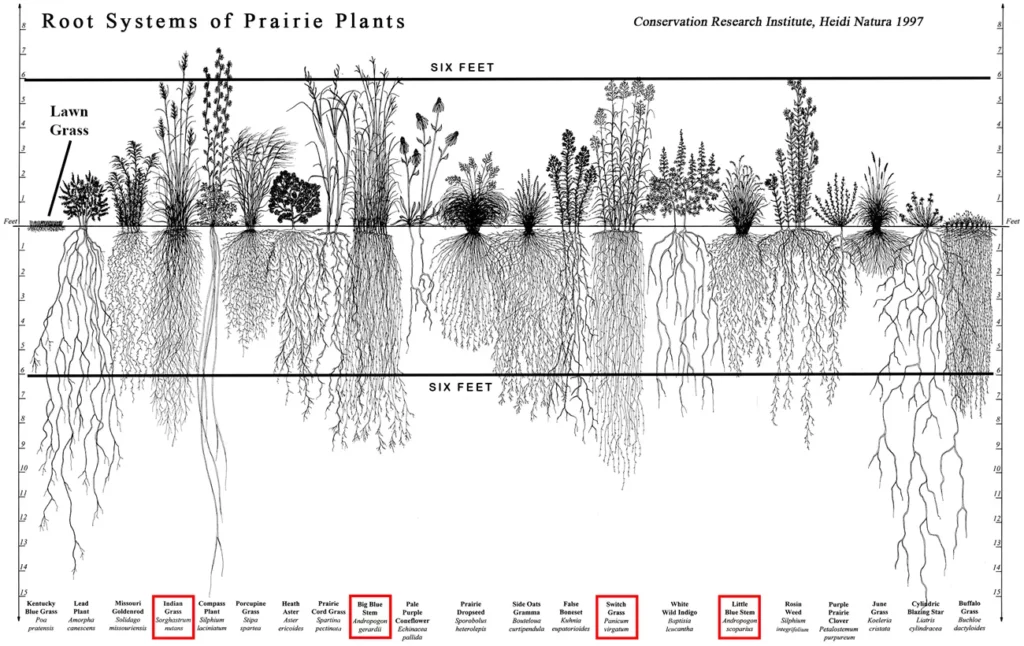
Heidi Natura, Conservation Research Institute, 1997
Root Systems That Heal the Soil
One of the defining features of native grasses is their root depth. While typical turf grass roots might only extend a few inches below the surface, native grasses can grow roots that reach 5 to 15 feet deep, depending on the species. These deep roots:
- Prevent erosion by holding soil in place during heavy rain or wind
- Improve water infiltration, allowing more rainfall to soak into the ground instead of running off
- Break up compacted soils, making space for air and water movement
- Cycle nutrients, drawing minerals from deep layers and making them available near the surface
While the root system is perennial, some roots die back annually and new ones grow, feeding soil microbes as they decompose. As those old roots decompose, they feed microbes and fungi, gradually building a rich, living soil.
Koeleria macrantha, Prairie Junegrass Root System
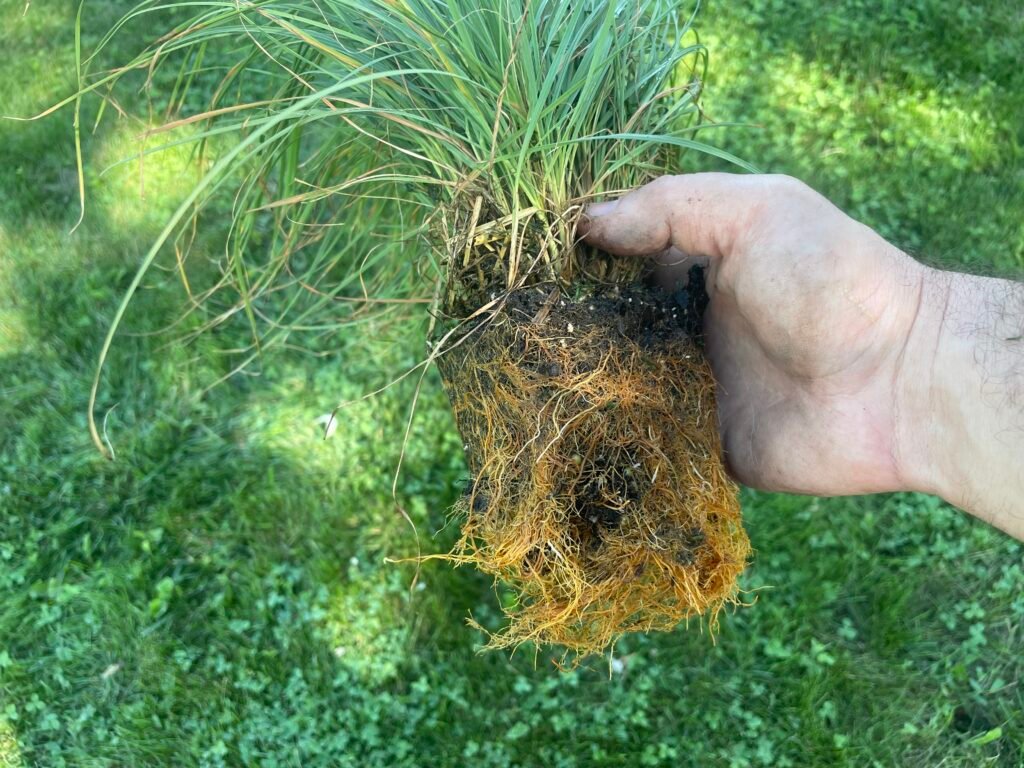

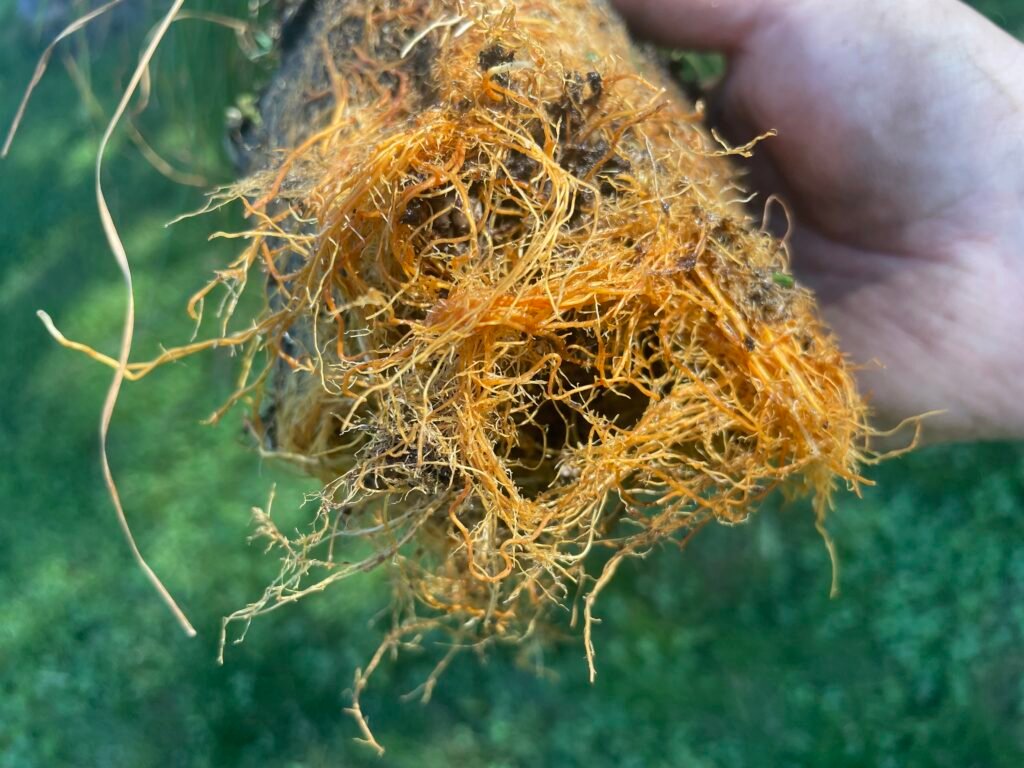
Native Grasses Support Soil Biodiversity
Healthy soil is alive, filled with microorganisms, invertebrates, and fungi that work together to support plant life. Native grasses promote this biodiversity by:
- Providing habitat and food for beneficial soil organisms
- Encouraging the growth of mycorrhizal fungi, which form symbiotic relationships with plant roots
- Creating microclimates in the soil that support everything from beetle larvae to earthworms
By supporting this underground web of life, native grasses make the soil more resilient and productive over time.
Check out the hive
The Hive is a personalized native plant database, curated from scientific resources and tailored to your exact ecoregion. It offers detailed growing information for over 75 species.
Climate Resilience and Carbon Storage
Another powerful trait of native grasses is their ability to store carbon. As they grow, they pull carbon dioxide from the atmosphere and store it in their roots and surrounding soil. Because they are perennial and long-lived, this carbon stays locked away for years, making native grasses an important tool in climate adaptation and mitigation.
They’re also extremely drought-tolerant once established, thanks to those deep roots, making them ideal for low-maintenance landscapes that can weather extreme heat and dry spells.
Integrating Native Grasses Into Your Garden
If you’re building a native garden or replacing your lawn, native grasses can be used as structural anchors, backdrop plants, or ground covers. Try combining:
- Big Bluestem for height and movement
- Little Bluestem for fall color and habitat
- Prairie Dropseed for texture and fragrance
- Sideoats Grama for small-scale planting and erosion control
- Switchgrass for texture, movement and year-round habitat value
- Purple Love Grass for soft, airy color and late-season movement
- Indian Grass for golden fall color and visual impact
They pair beautifully with flowering natives like Purple Coneflower, Butterfly Milkweed, and Coreopsis, adding contrast and function. So many options with functionality.
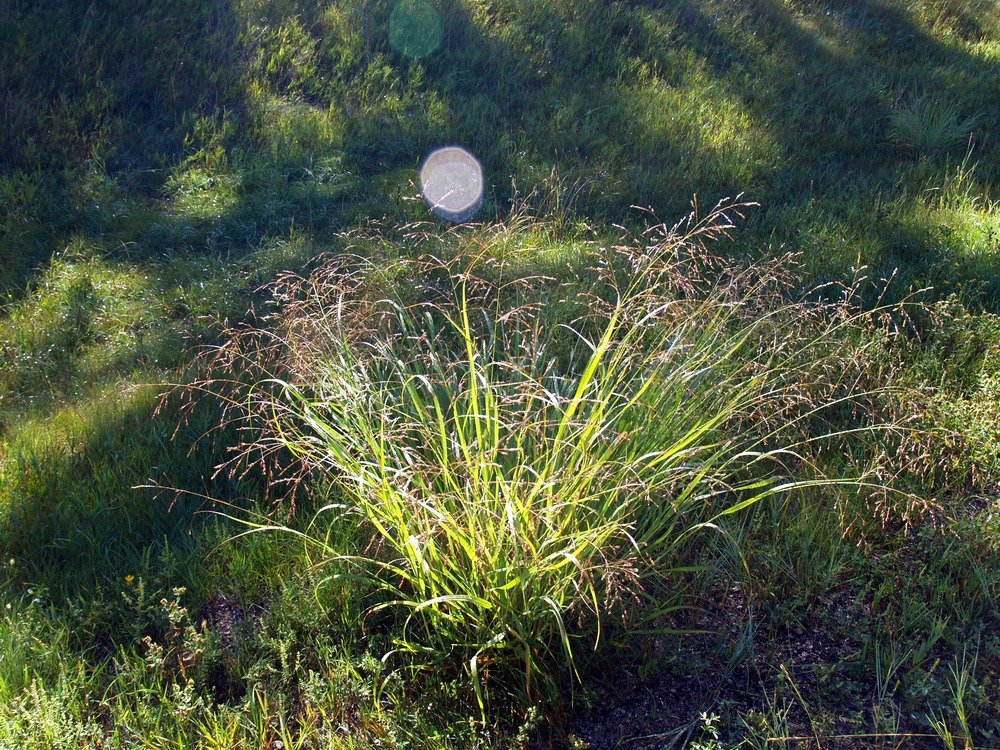

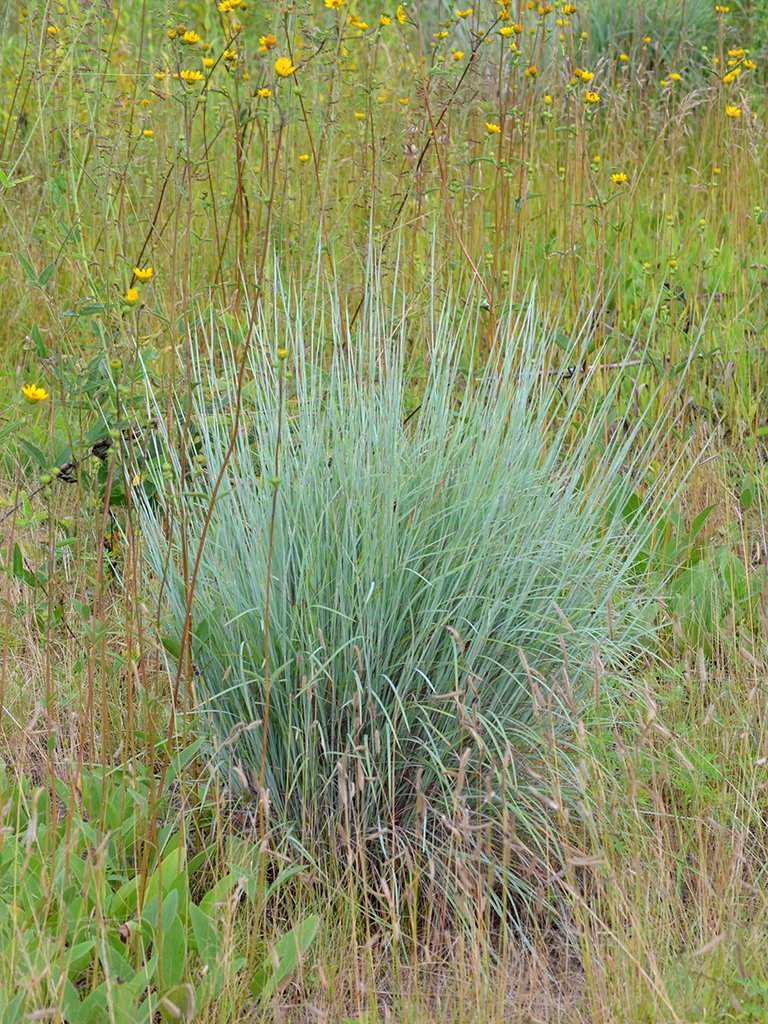
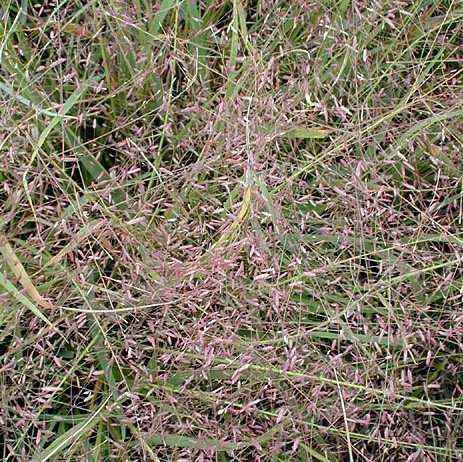
Final Thoughts
Native grasses are often overlooked when garden planning. They seem boring, adding little if any value until we look literally a little deeper and have some perspective.
They are more than just background greenery—they’re essential contributors to soil health, water management, biodiversity, and climate resilience. By planting even a small patch in your yard, you’re helping restore the natural balance and support an entire underground ecosystem.
Watching those seed heads sway in the wind, knowing what’s happening beneath the surface or in the winter when the light snow accumulates and highlights each blade of grass -it all hits different. Especially when you realize your yard isn’t just a patch of land anymore. It’s part of a living system, and you’re the one bringing it back to life.



